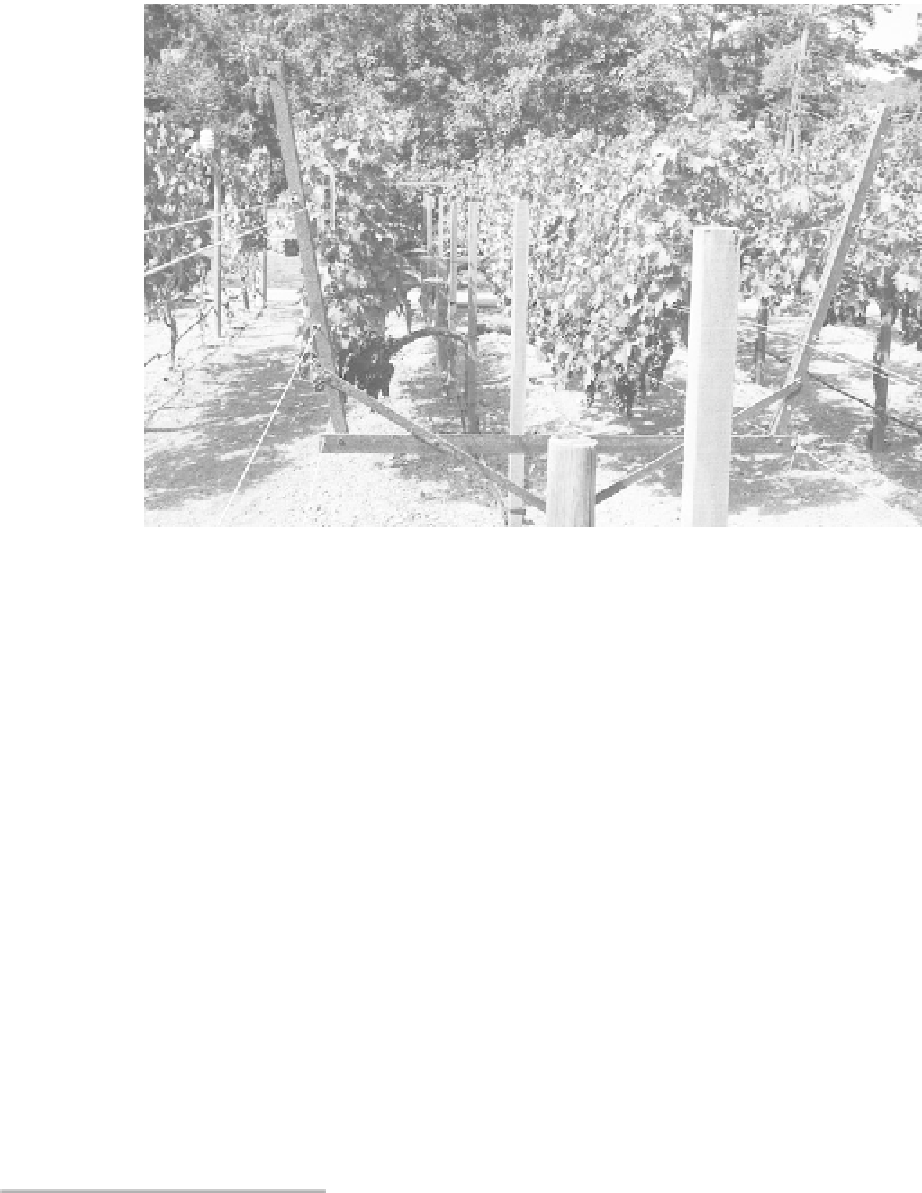Agriculture Reference
In-Depth Information
Vine row with Lyre trellis and horizontally divided canopy. Photograph by the author.
Figure 8.6
maximum density of vines is 10,000 per ha (1 m
1 m). This spacing is about
twice the densest spacing used in California and Australia. Although the yield per
vine is low, a satisfactory yield per ha can be maintained because of the higher
plant density.
High-potential sites
. Sites on deep, well-structured loam to clay loam soils with
high organic matter content will naturally produce vines of high vigor. Close plant-
ing and the application of
RDI
do not necessarily increase root competition and
control vigor, because the vines root more deeply and explore a much larger soil
volume than they would on low-potential sites. However, yield and quality can
be optimized by using row spacings of 3.4-3.6 m and in-row spacings not less
than 2 m. The trellising should be a divided-canopy type, such as the Geneva
Double Curtain or Lyre (fig. 8.6), or the Scott Henry or Smart Dyson types, all
of which allow more cordon length per hectare and an increased crop load com-
mensurate with the vegetative growth. The open canopy also helps to avoid ex-
cessive fruit shading. Management to control excess vigor on high-potential sites
is discussed further in chapter 9.
Summary Points
8.5
This chapter focused on the proper site selection and soil preparation for grow-
ing grapevines. The major topics are summarized as follows:
■
Knowledge of the soil is important for site selection. Soil data relevant to viticul-
ture are used together with climate and topographic data to determine the most
suitable sites for growing particular varieties.
■
Generally, soil information derived from a
general-purpose classification
lacks de-
tail on properties specific to viticulture at an appropriate scale. A
special-purpose

